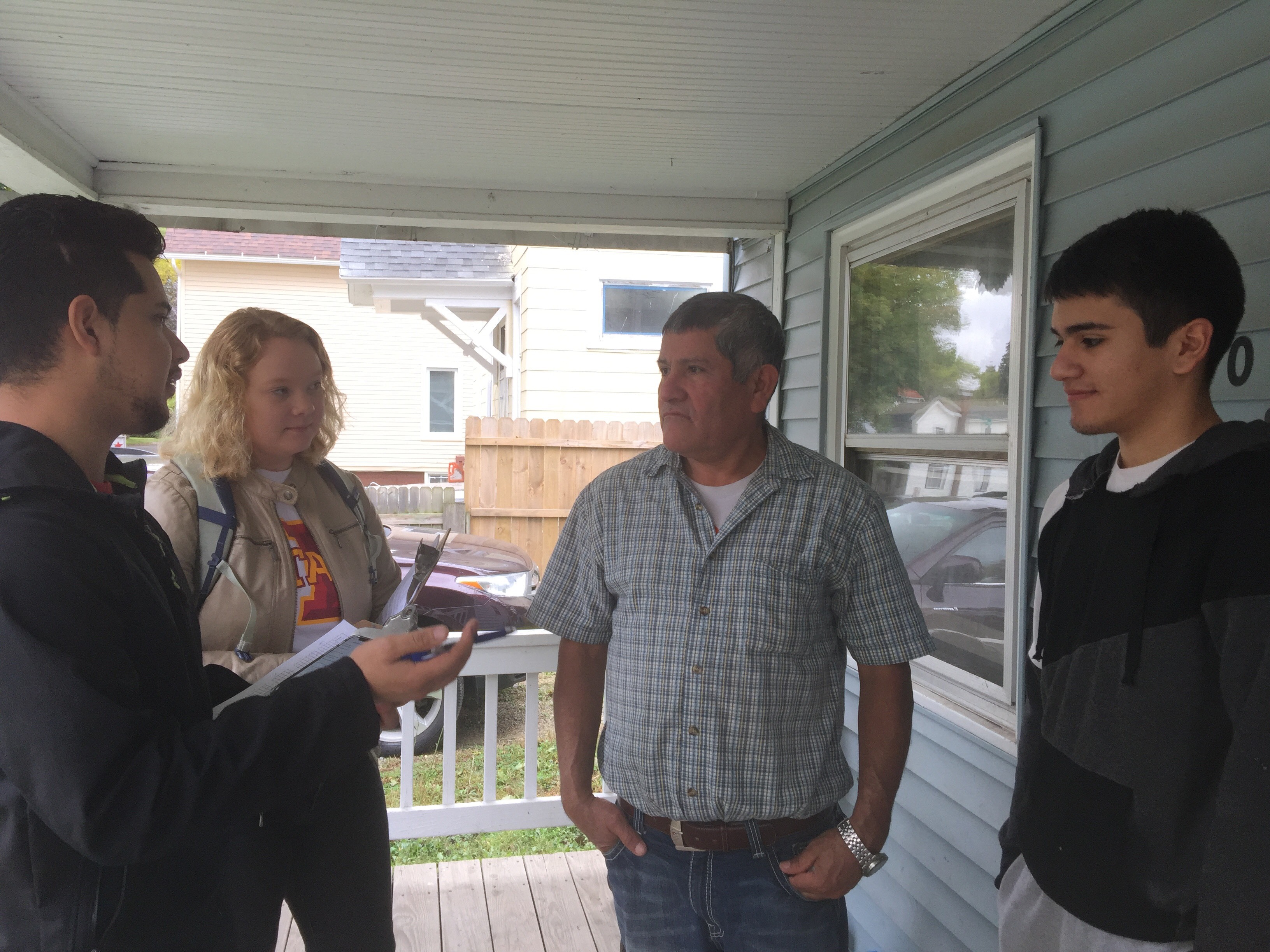
Enrique Rubio-Delgado, graduate student in civil, construction and environmental engineering, and Emily Vanek, senior in community and regional planning, interview Marshalltown residents whose housing was impacted by the July 2018 tornado. Photo courtesy of Sara Hamideh.
MARSHALLTOWN, Iowa – An EF3 tornado carved a path of destruction through Marshalltown this summer, leaving hundreds of damaged homes and buildings and an ongoing search for recovery assistance.
A disaster researcher at Iowa State University has begun examining how the tornado affected different types of households – particularly immigrant households and renters – to understand what can be done in the future to address disaster recovery needs in small communities throughout the United States.
Sara Hamideh, assistant professor of community and regional planning, received a quick response grant from the University of Colorado Boulder’s Natural Hazards Center – a program that helps researchers travel to areas recently stricken by disaster before memories fade and physical evidence is erased.
The ISU Hazard Mitigation and Community Resilience Program was established in Iowa State’s College of Engineering last year to foster multidisciplinary disaster research. Sri Sritharan, Wilkinson Chair Professor of Interdisciplinary Engineering in civil, construction and environmental engineering and interim assistant dean for strategic initiatives within the college, worked with Hamideh to secure additional funding from the HMCR program.
The plan is to collect “perishable” data – the tangible damage, as well as the personal stories and memories – that will be lost as time passes and the town rebuilds. The study will include a random sample of about 600 Marshalltown households and housing units to examine damage, life disruption and displacement of renters and immigrants, and how that compares to other disaster victims.
“I hope this research will give us insight into the different disaster experiences between homeowners and renters, and how your chances of being able to stay in your home are affected by a disaster,” Hamideh said. “These socioeconomic issues are not bound to a disaster. These are pre-existing vulnerabilities that are exacerbated when a disaster strikes.”
While local donations, state resources and insurance have helped some, Hamideh says the low-income neighborhoods where much of the damage occurred are having difficulty recovering – a problem that will only be exacerbated as time passes and damages go unfixed. For example, a low-income homeowner’s limited options may mean holes in the roof go unrepaired, leading to further damage and mold, unsafe and unhealthy living conditions and potentially, a permanent move away.
“Often, the people displaced by a disaster are the most socially vulnerable,” Hamideh said. “We’re concerned about potential displacements resulting from delays in repairs as winter approaches, and the populations forced to leave to find housing and work who can’t return as quickly, if at all.”
The team’s goal is to help not only Marshalltown residents, but also similar communities as they prepare for future natural disasters.
The team includes community and regional planning and civil engineering undergraduate and graduate students, who have started conducting physical damage assessments, household surveys and interviews in Marshalltown.
The ISU team’s research also accompanies work underway by AmeriCorps volunteers, who are conducting a longer-term and broader damage and needs assessment in Marshalltown.
